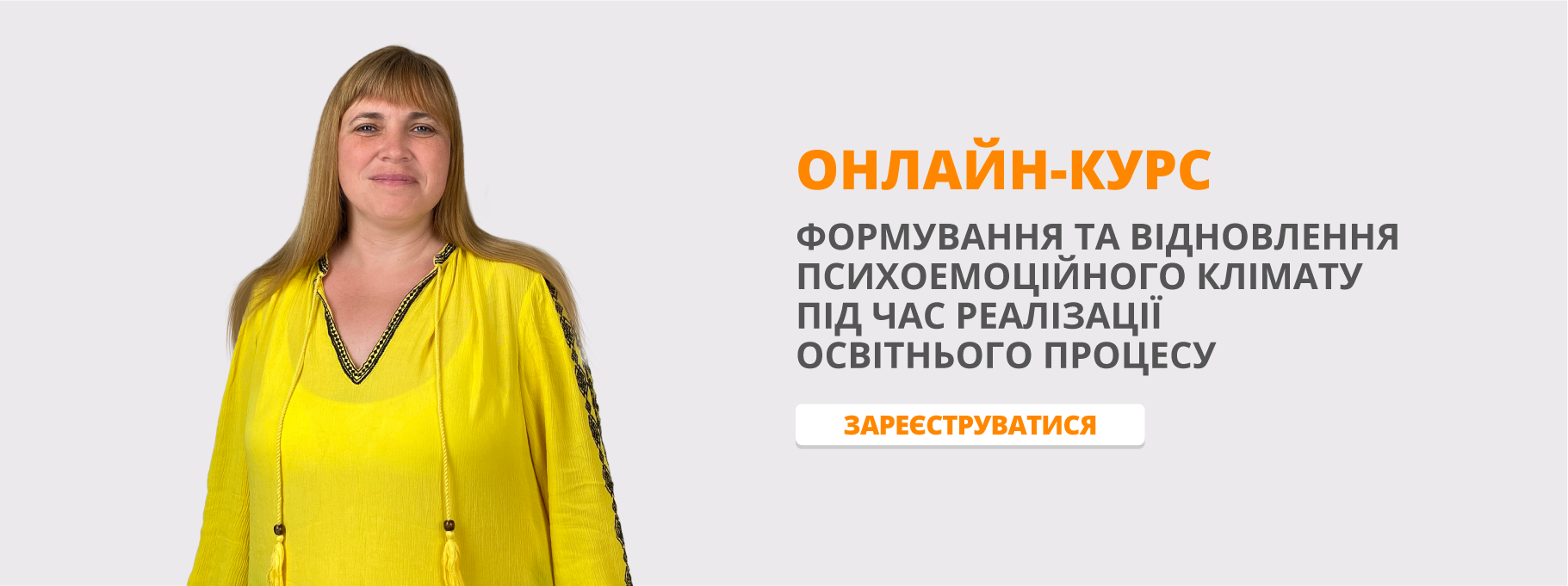Перше вересня. Починаємо! Україна. The First of September. Let`s start! Ukraine.
Мета: адаптувати учнів до робочої атмосфери; повторити лексичні одиниці з теми "Україна"; розвивати почуття патріотизму. BACK TO SCHOOL. 2020 – GUIDE. Literature: https://www.pearsonmylabandmastering.com/northamerica/myeducationlab/ https://www.pearson.com/uk/educators/higher-education-educators/products-and-services/course-resources-and-content/print-textbooks-and-ebooks.html Level: B1 ‐ B2 (taken from “Culture choices for Ukraine”)
Ukraine 1
BACK TO SCHOOL
Teacher’s best !
2020 – GUIDE
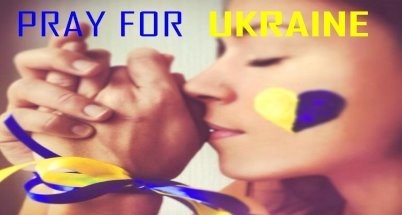
Our job is to teach the students we have.
Not the ones we would like to have.
Not the ones we used to have. Those we have right now.
All of them.
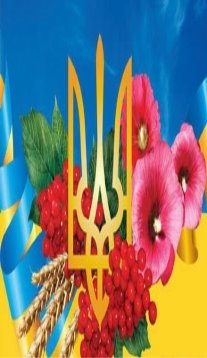
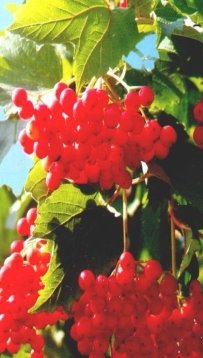
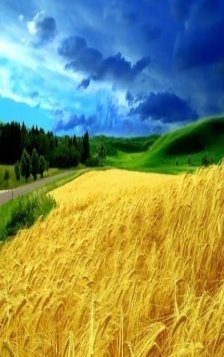
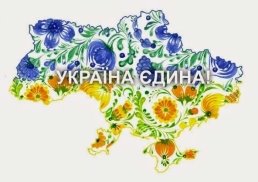
Primary School
United Ukraine!
1. Answer the questions:
- What country are you from?
-
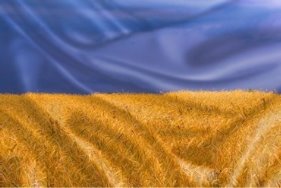 What languages do people speak in Ukraine?
What languages do people speak in Ukraine?
- What languages can you speak?
- What colors is the Ukrainian flag?
2. Match :
Yellow Sky
Blue Wheat
Say:
Our Ukrainian flag is blue because of the blue sky
and yellow because of yellow wheat.
3. Guess the words and write them.
- When it rains, people use
- When the sky is blue, my dad and I fly the
- The Dnipro is the longest in my country.
- is my favourite subject (lesson). I like painting.
- My friend’s name is Paola. She is from from Rome,
- My mum helps the doctor, she’s a
- Many people in my country can speak
Now write only the first letters of the words, you have guessed. What word is it?
![]()
![]()
![]()
![]()
![]()
![]()
4. Make up the phrases
- My a) dish
- Favourite b) language
- National c) motherland
- Ukrainian d) people
- Kind e) flag
1 _______ 2 _______ 3 _________ 4 __________ 5 __________
5. Use the phrases and make up the sentences
- is a nice country.
- My is varenyky.
- The of Ukraine is blue and yellow.
- I like speaking
- live in Ukraine.
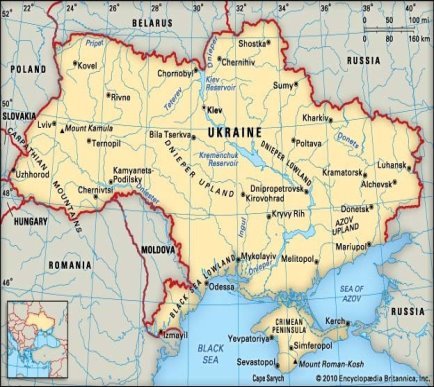 6. Find the places children come from on the map and circle them.
6. Find the places children come from on the map and circle them.
- Fed’ko lives in Uzhhorod.
- Roman lives in Lviv.
- Ira is from Kovel.
- Emilia lives in Kyiv
- Nadia lives in Sumy
- Dima is from Luhansk.
- Sasha lives in Donetsk
- Hanna lives in Melitopol
- Ihor is from Odesa
- Petro lives in Chernivtsi
- These children spent their summer holidays in the summer camp in the Carpathian Mountains. And now they are real friends.
7. Write the first letters of all children’s names and read the word.
![]()
-
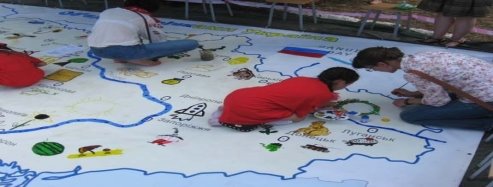 Join the towns and cities indicated on the map from the first to the last one
Join the towns and cities indicated on the map from the first to the last one
- Read the post card these children have written in the summer camp
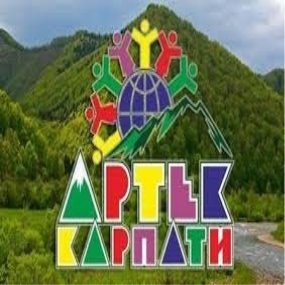

- Use the information from Ex. 7, 10 and fill‐in the table
|
Cities and towns __________________________________________________________________________________________ |
________________________________________________________________________________________________________________________________________________________________________________________________________________________________________________________ |
________________________________________________________________________________________________________________________________________________________________________________________________________________________________________________________ |
- Make your own summer card and exchange them with your friends.
- Unscramble.
|
MANYPEOPLELIVEINUKRAINETHEYLIKETHEIRCOUNTRYWHATABOUTYOU? |

13. Tell your classmates about your motherland.
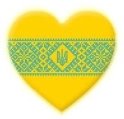 Secondary School:
Secondary School:
United Ukraine!
Level: A1‐A2
Do you know Ukraine?
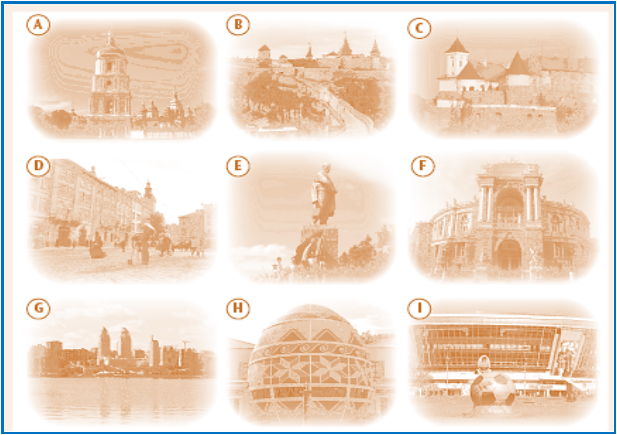
1. Match the places (1‐9) to the pictures (A‐I).
- Residential complex Towers G
- Saint Sophia’s Cathedral
- Monument to Taras Shevchenko
- Pysanka museum
- Palanok Castle
- Fortress and Castle
- Opera House
- Rynok Square
- Donbass Arena Stadium
2. Match the cities (a–i) to the places (1–9)
in exercise 1.
a Donetsk 9
b Dnipropetrovsk
c Kyiv
d Kolomyia
e Kamianets‐Podilskyi
f Lviv
g Odesa
h Kharkiv
i Mukacheve
- Close your books. Ask and answer.
A: Where is Pysanka museum?
B: It’s in Kolomyia
UKRAINE QUIZ
- What are the colours of the Ukrainian flag?
a black and red
b blue and yellow
c white and blue
2. Which city is named after a Ukrainian hetman?
a Kyiv
b Khmelnytskiy
c Cherkasy
- Who built the Golden Gates of Kyiv?
a Prince Yaroslav
b Bohdan Khmelnytskiy
c Prince Volodymyr
- What is Ukraine’s main river? a the Dniester
b the Buh
c the Dnipro
- Which mountains are in the west of Ukraine?
a the Crimean mountains
b the Carpathian mountains
c the Rocky mountains
UKRAINE: FACTFILE
1. 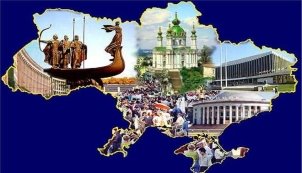 Read the statements about Ukraine and answer true (T) or false (F).
Read the statements about Ukraine and answer true (T) or false (F).
- Ukraine is the largest country in Europe.
- Ukraine is two times smaller than Italy.
- About 2 million Ukrainians live in other countries.
Read the text and check your answers.
The Country
Ukraine is the second largest country in Europe with the area of about 600,000 square kilometers. Its territory is two times larger than the territory of Italy! It has the population of nearly 42 million people. There are over 12 million Ukrainians who live in other countries of the world ‐ Argentina, Brazil, Canada, Italy, Russia, the USA and in many others.
Чисельність населення України на січень 2020 року становила 41 902,4 тис осіб.
2. Fill in the table with the numbers from the text.
|
Territory |
sq km |
|
Population |
mln |
|
Ukrainians abroad |
mln |
-
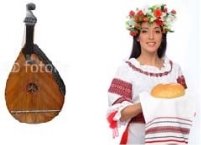
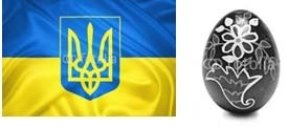






What Ukrainian symbols can you see in the following pictures?
The Symbols
There are official and unofficial symbols of Ukraine. The official symbols include the state flag, the state emblem and the state anthem.
The unofficial symbols are many. The national dress is a shirt called a vyshyvanka. Both men and women wear it during festivals and holidays. The national musical instrument is the bandura. It’s a string instrument with a very gentle beautiful sound. We can also mention a pysanka, a painted Easter egg, or a Ukrainian wreath made of colourful flowers and ribbons.
4. Answer the following questions.
- What famous Ukrainian writers and poets do you know?
- Do you know any famous Ukrainian women writers?
- Do you live in a city or in the country?
- Do you have relatives who live in the country/ in a city?
- How often do you visit them?
The People
About 70 per cent of the Ukrainians live in cities and 30 per cent in the country. From May to October a lot of those who live in cities often go to their country cottages and work in their gardens. Children enjoy the fresh air, the sun and the beautiful nature of Ukrainian countryside.
Foreigners who visit Ukraine say that the Ukrainians are cheerful and outgoing, hospitable and friendly, hard‐working
and freedom‐loving. The foreign guests like Ukrainian songs which are often happy and romantic and they love Ukrainian national food!
The Language
The modern Ukrainian language developed from Old Slavic languages from the 9th to the 16th century. The first printed book in modern Ukrainian was The Aeneid by Ivan Kotlyarevskiy. It appeared in 1798. Later Taras Shevchenko became a real national poet of Ukraine. In the 19th century there were more women writers in Ukraine than in any other country in the world!
DID YOU KNOW?
The closest language to Ukrainian is the Belarusian language. Before the 16th century the two nations had a common written language!
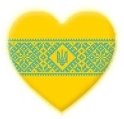 Secondary School:
Secondary School:
United Ukraine!
1. Do the quiz. Then compare your answers with a partner.
HOW WELL DO YOU KNOW YOUR COUNTRY?
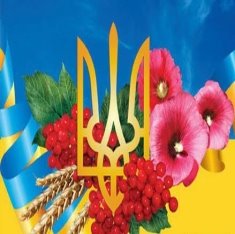
- How many countries in the European Union are bigger (km2) than Ukraine?
a none b one c two
- In which language is the name of the country ‘Úcráin’?
a Hungarian b Finnish c Irish
- The Ukrainian flag has two colours on it, blue and yellow. Which country does not have only two colours on its flag?
a Poland b Brazil c Sweden
- One of the most popular dishes in Ukraine is varenyky. Which country has a very similar dish to this?
a Germany b Greece c Poland
2. Read the text quickly to check your answers to the quiz.
- Ukraine is a land of contrasts, from north to south and east to west, in geography, language and culture. It is the largest country in Europe, not counting Russia, but has a population of only around 45 million people, a little less than Spain, meaning that it is easy to find quiet and natural places where you can unwind. In Ukraine there is something for everyone: mountains in the south and west, the beautiful Black Sea, unspoilt forests and open country and, of course, the rich soils of Ukraine. The flag of Ukraine, like its neighbours Poland and Sweden, has two colours – in Ukraine’s case, blue and yellow
– and it can be seen flying proudly from official buildings throughout the country.
- The famous capital of Ukraine, Kyiv, is a large city where almost 3 million people live. It is one of the oldest cities in this part of Europe and is a magnificent mixture of the old and the new, with a wide variety of attractions, including countless beautiful historic buildings and monuments and a modern metro system to help you visit it all. When you visit Ukraine, you should not only visit Kyiv, of course. Be sure to visit Kharkiv in the east and beautiful Odesa in the south by the sea, and historic Lviv in the west – at the very least! If you come to Ukraine, better make it a long visit!
- The name of Ukraine is easy for foreigners because it the same in almost all languages – in English ‘Ukraine’, in Polish ‘Ukraina’, in Irish ‘Úcráin’ but saying anything else in the Ukrainian language can be difficult, especially if you do not know the Cyrillic alphabet. There is no need to worry, though, as Ukrainians are very patient with foreigners trying to speak their language. There are other language spoken in Ukraine. For example, in the west, Polish, and today more and more Ukrainians are learning English, French and German.
- Ukrainian food is tasty and filling – you certainly won’t be hungry after a real Ukrainian meal! Make sure you try traditional dishes like borsch (beetroot soup), varenyky (filled dumplings, very similar to Polish pierogi) and holubtsy (stuffed cabbage rolls), not forgetting, of course, the world‐famous Chicken Kiev which, though not a traditional Ukrainian dish, originated in Ukraine and became famous in the West.
- The true treasure of Ukraine, however, is not its mountains or its waterfalls, not its architecture or its food; the true treasure of Ukraine is its people. In the cities people’s lifestyles can be very hectic and the people quite stressed – in fact, sometimes visitors to Ukraine say that Ukrainians do not smile too much… until you get to know them. Then the famous hospitality of the Ukrainians comes to life. If you are invited to visit a Ukrainian in their flat or house, be ready for a long and lively visit!
3. Read the text again and match the headings to the paragraphs. There is one extra heading.
a So much to see!
b Home is where the heart is
c Popular with everybody
d Bon appetit!
e Far from the crowds
f Quite a challenge!
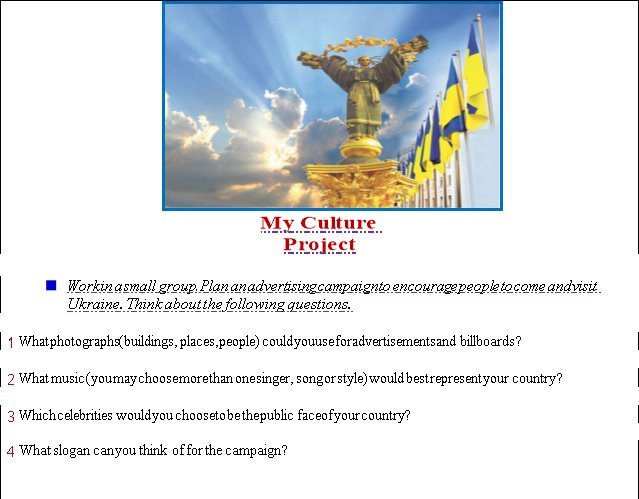
Alternatives to “What I did on my summer vacation”
Do your students groan when you ask them what they did on their summer vacations? Do you groan a little as you wait for someone to answer? If you and your students had the summer off, it’s pretty impossible to avoid the what‐we‐did‐this‐summer topic. Instead of dragging “not much” out of them, or assigning the question as a journal or essay topic, can you think of some new ways to ask the proverbial back‐to‐school question? Here are a few ideas to get you thinking.
12 Alternative Back‐to‐School Discussion Topics
- What I DIDN’T DO this summer
- A unique person I met this summer
- My most memorable moment of the summer
- One thing I learned this summer
- The person I spent the most time with this summer
- The best meal I ate this summer
- A day that I wish didn’t happen this summer
- What I wish I had taken a picture of this summer
- Something educational I did this summer
- Something I bought this summer
- Something I made this summer
- The best word to describe this summer
8 Alternative Back‐to‐School Classroom (and Homework) Activities
- To warm up, play a class game of categories using “summer things” only. (e.g. things I did, things I ate, things I saw, things I accomplished, things I should have done) After the topic is shouted out, go around the class giving each student a chance to share a word or phrase about his or her summer. The topic changes each time a student hesitates for too long (5 seconds or so). More advanced students can create their own “summer thing” categories. Teacher can name the category for lower level students.
- Instead of asking your students, “What did you do this summer?” have each student take a turn changing the verb “do” to another verb (e.g. eat, sing, play, find). Go around the room to get a response from each student for each new verb.
- Play My Summer Fact or Fiction (Students tell something that did or didn’t happen this summer. The class has to guess whether each story is true or made up.)
- Have students interview each other about the past summer. Student can report back to the class about the highlights of their partner’s summer. Students can turn the discussion topics (above) into questions, or write their own.
- Have students create their own Find someone who…this summer. (Students can do the writing in pairs and then break up and survey the class. (E.g. Find someone who got injured this summer. Find someone who went to the USA this summer. Find someone who worked most of the summer.)
- For homework, have students write true stories from their summer as if they were found in a newspaper. Put the stories together to make a Summer Digest.
- Make a My Summer collage (with old magazines) and describe it. (Or divide a page in half and have partners work on their own collage on each side. They can present the collage to the class by comparing the two summers.)
- Have each student ask you a question about your summer. (The earlier they get to know a bit about the real you, the better:)
Teacher’s Fun Zone

![]()

Be patient and enjoy teaching!
Answers:
Primary School
- ex. 3 umbrellas, kite, river, art, Italy, nurse, English (UKRAINE)
- ex. 4 1‐c 2‐a 3‐d 4‐b 5‐e
- ex. 7 FRIENDSHIP
Secondary School (Levels A1‐A2)
- Do you know Ukraine: Ex.1 1 –G 2‐A 3‐E 4‐H 5‐C 6‐B 7‐F 8‐D 9‐I
Ex. 2 a‐9 b‐1 c‐2 d‐4 e‐6 f‐8 g‐7 h‐3 i‐5
- Ukraine quiz: 1‐b 2‐b 3‐a 4‐c 5‐b
- Ukraine: Factfile ex.1 1‐F 2‐ F 3‐F
ex.2 600,000 ; nearly 42 mln; over 12 mln
ex.3 the bandura, a vyshyvanka, the state emblem, a pysanka
Secondary School (Levels B1‐B2)
- How well do you know your country? 1‐a 2‐c 3‐b 4‐c
- Headings/paragraphs a‐2 b‐5 d‐4 e‐1 f‐3
Literature:
https://www.pearsonmylabandmastering.com/northamerica/myeducationlab/
Level: B1 ‐ B2 (taken from “Culture choices for Ukraine”)
Good luck!


про публікацію авторської розробки
Додати розробку
